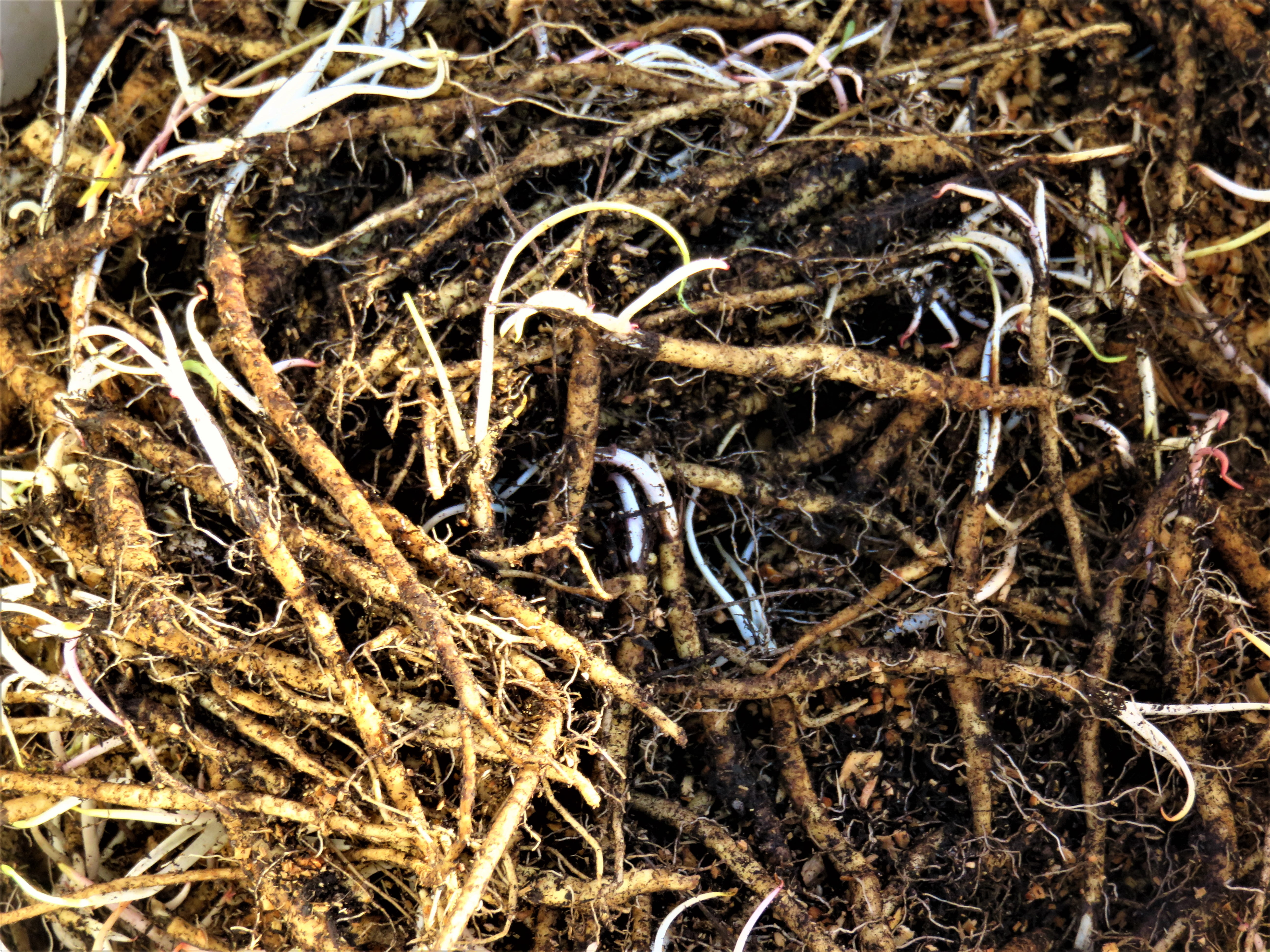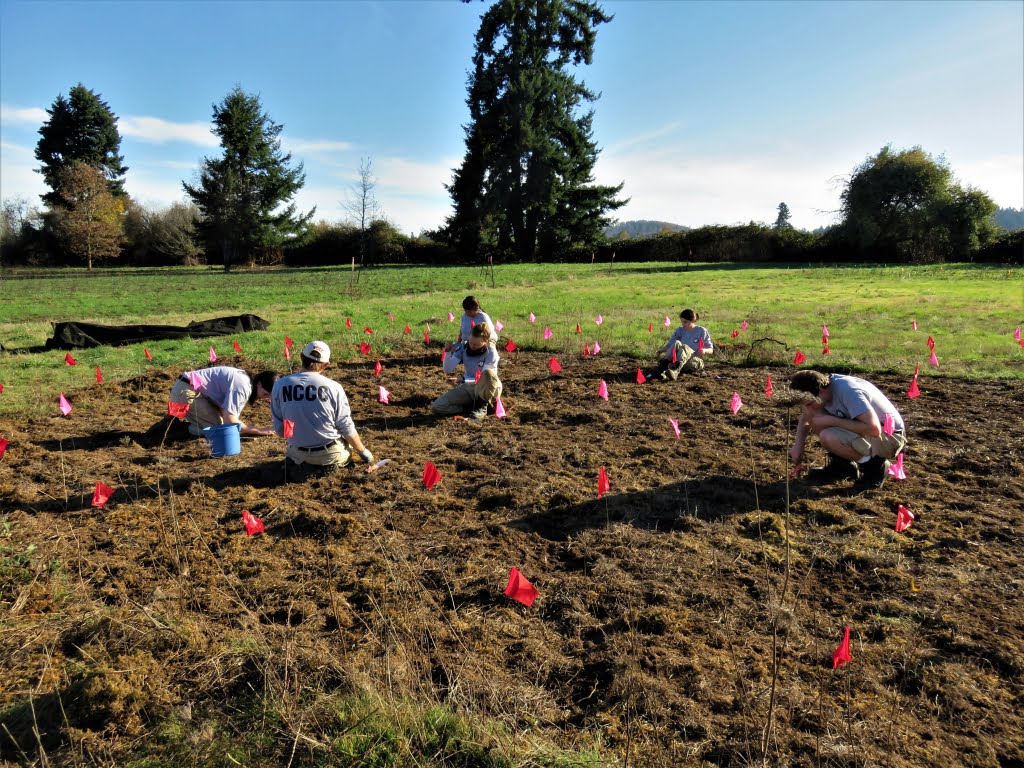
Islands of Prosperity
Recently IAE hosted the Gold 5 AmeriCorps team, a group of young volunteers who devote 9 months to community service. Among other projects they spent two days planting native species to enrich the plant community and enhance habitat for Fender’s blue butterfly at Fir Butte, a Bureau of Land Management site just west of Eugene. Fir Butte supports large populations of Kincaid’s lupine and Fender’s blue butterfly, which are both imperiled species. After emerging from their eggs, Fender’s blue caterpillars begin to eat the undersurface of lupine leaves. Although the large population of Kincaid’s lupine at Fir Butte provides abundant food for Fender’s blue caterpillars, the site offers fewer food resources available for the adult butterflies, which rely on nectar from the flowers of a relatively small number of native and non-native species. Thus the planted species form “islands” of nectar resources in what, to adult butterflies, is otherwise a barren landscape.
The AmeriCorps crew planted dwarf checkermallow plugs, narrowleaf onion bulbs, and barestem biscuitroot taproots, all of which are nectar species for the Fender’s blue butterfly. Additionally, plugs of Roemer’s fescue and Pacific woodrush were planted to occupy space and make the planting more resistant to invasion by non-native species. The planting areas were also over-seeded with a mix of 15 native species.
All in all, about 7,000 plugs, bulbs, and taproots were planted.
The native nectar plants appear to be helping the butterfly population. The Fender’s blue population tripled from 2013, when the first nectar islands were planted, to 2015. There was also a large increase in butterfly population size in 2016.


Restoration
Research
Education
Contact
Main Office:
4950 SW Hout Street
Corvallis, OR 97333-9598
541-753-3099
info@appliedeco.org
Southwest Office:
1202 Parkway Dr. Suite B
Santa Fe, NM 87507
(505) 490-4910
swprogram@appliedeco.org
© 2025 Institute for Applied Ecology | Privacy Policy
